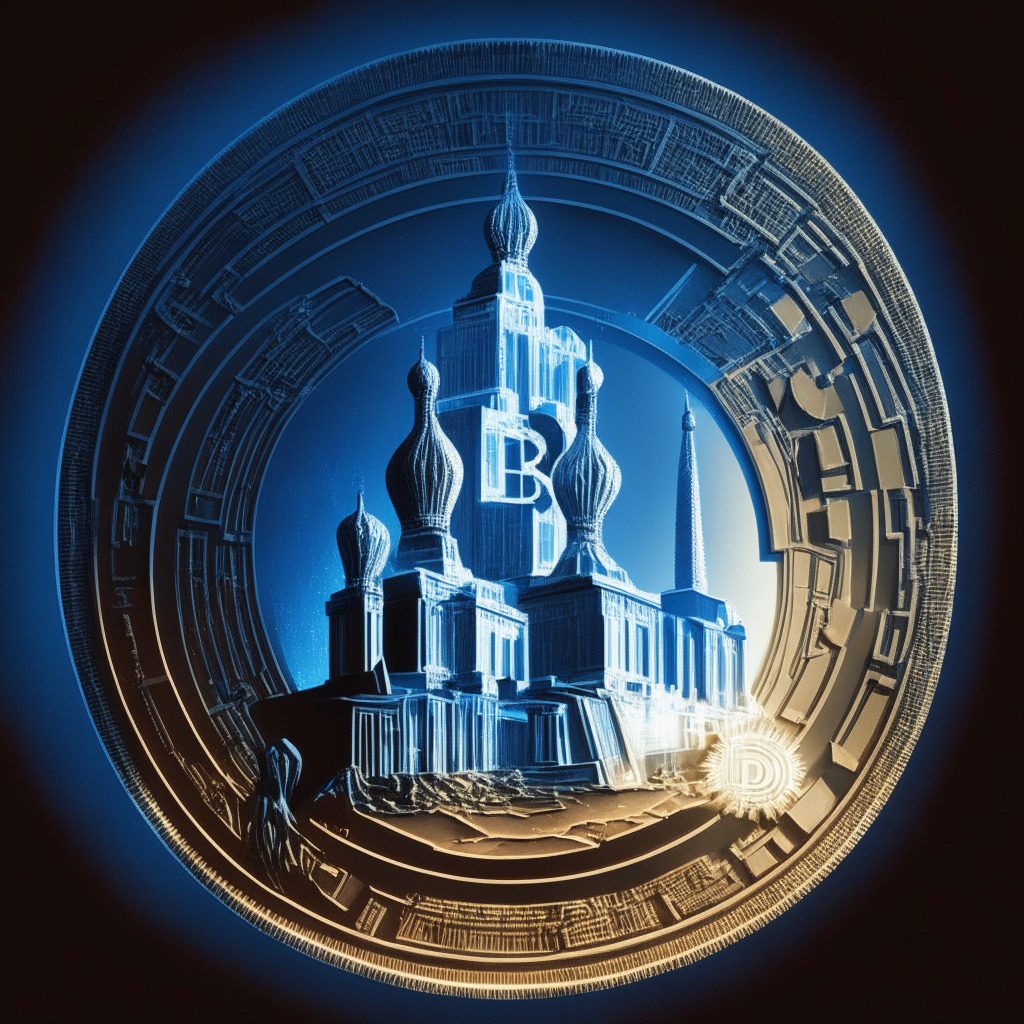A high-ranking Russian legislitor, Anatoly Aksakov, predicts that domestic corporations will utilize the nation’s digital ruble, a Central Bank Digital Currency (CBDC), by 2025, especially in Latin American nations. He also suggested potential usage could transform “mutual settlements” among these nations.
Search Results for: Anatoly Aksakov
The Emerging Digital Ruble: Potential Transformation in Russia’s Banking Landscape
Anatoly Aksakov, head of Russia’s State Duma financial committee, predicts a reduced role for traditional banks as the Central Bank Digital Currency (CBDC), the digital ruble, gains adoption. Aksakov urges banks to align their infrastructure with blockchain technology to leverage CBDC’s financial capabilities.
The Impending Role of Blockchain: Will Digital Currencies Supersede Banks?
Russian legislator, Anatoly Aksakov, suggests the role of banks might diminish with advancements in blockchain technology, especially with the advent of the digital ruble. This technology presents a potential competitor to digital assets, raising concerns about financial stability. Aksakov believes this could render traditional banking obsolete, replacing human decision-making with automated actions.
Transforming Banks: How Russia’s Digital Ruble May Redefine Traditional Banking Structures
Anatoly Aksakov, head of Russia’s parliamentary financial committee, suggests a future where blockchain and Central Bank Digital Currencies (CBDCs) could erode traditional banking structures, with the digital ruble leading the way. Banks risk being marginalized unless they adapt to this new digital financial landscape.
Russo-Chinese Digital Currency Alliance: Pros, Cons, and The Inherent Power Tussle
Anatoly Aksakov, a Russian political figure, suggested potential compatibility between Russia and China’s Central Bank Digital Currencies (CBDCs) for international payments. With aims to use the digital ruble for global economic activities, this proposal hints at the possibility of digital currencies taking the centre stage in world trade.
Navigating Digital Ruble Tokens: Russia’s Potential Game-Changer with Associated Risks
The Central Bank of Russia has limited digital ruble wallets to a maximum of 300,000 rubles per month to maintain market stability. However, suggestions have been made to remove this cap for non-Russian investors to facilitate foreign investment in Russia and simplify the purchase of Russian digital financial assets. This decision reflects the growing adoption of digital currencies globally.
Navigating the Labyrinth of Crypto Regulations: A Dual Perspective on Blockchain Progress and Safety
“In the realm of crypto regulations, authorities are tightening grips to mitigate potential risks. The situation sheds light on the increased scrutiny towards prominent crypto figures while emphasizing the importance of regulatory measures. Meanwhile, the emergence of blockchain and digital currencies surfaces concerns about impacting traditional banking systems, creating regulatory complexities.”
The Digital Ruble Takes Center Stage: Potential Lifeline or Invasion of Financial Privacy?
“Vladimir Putin has signed the Digital Ruble Bill into law, enabling Russia’s Central Bank to launch its own digital currency. The digital Ruble, a Central Bank Digital Currency (CBDC), can serve as both a tool against international sanctions and a means of monitoring governmental expenditure on social projects. However, there are concerns it could be used to control citizens’ spending.”
Understanding the Arrival of Russia’s Digital Ruble: Hopes, Fears, and Future Possibilities
“The new law signed by President Putin introduces a digital ruble, operated by the Russian Central Bank, for money transfer and payment. This opens new possibilities and concerns alike, as the centralization draws apprehension from crypto enthusiasts who favor decentralization. Initial public response may be lukewarm, with mass adoption not anticipated before 2025 or 2027.”
Russia’s Shift Towards Private Crypto Exchanges: Examining Implications, Benefits, and Drawbacks
Russia abandons plans for a government-operated cryptocurrency exchange, opting instead to create regulations allowing the private sector to manage exchanges. This reflects the contradictory relationship autocratic governments have with decentralized digital assets while highlighting the inevitability of cryptocurrency adoption and the need for effective regulations.
Russia Shifts from State-Owned Crypto Exchange to Private Sector Regulations: Pros, Cons & Conflicts
Russian lawmakers abandon plans for a state-owned cryptocurrency exchange, opting to regulate existing private enterprises instead. This shift aims to minimize risks of sanctions, cyber attacks, and market monopolies, potentially signifying a new chapter in Russia’s relationship with cryptocurrencies.
Russia’s Shift to Regulating Multiple Crypto Exchanges: Impact on Cross-Border Settlements and Stability
The Russian government plans to establish regulations for multiple cryptocurrency exchanges, focusing on cross-border settlements and bypassing sanctions restrictions. While Russia’s central bank is expected to regulate these exchanges, new limitations and compliance rules may be introduced. This multi-exchange approach balances the potential benefits of cryptocurrencies and mitigates risks to the country’s financial stability.
Russia Abandons National Crypto Exchange Plans, Focuses on Regulating Multiple Platforms
Russia has abandoned plans for a national cryptocurrency exchange and is now focusing on establishing rules and regulations for multiple crypto trading platforms, prioritizing regulation. This shift aims to create a robust and secure ecosystem for digital assets while addressing challenges like security and investor protection.
Russia Forgoes National Crypto Exchange for Regulated Operations: Pros, Cons, and Market Impact
Russian authorities abandon plans for a national cryptocurrency exchange, focusing instead on establishing regulations for platform development and operations. This move, supported by the Ministry of Finance and Central Bank, aims to reduce risks and encourage crypto adoption in the country, while addressing market dominance and security concerns.
Russian Firms Turn to Crypto for Overseas Trade: Legal Repercussions and Future Regulations
Russian firms are using cryptocurrency for overseas transactions to circumvent US and EU sanctions, while operating within the existing legal framework. However, the Russian Central Bank expresses openness to digital currency-based trade, prioritizing the launch of a digital ruble and developing cryptocurrency regulations. The government’s balancing act between digital currencies and their digital ruble initiative remains to be seen.
Bye Bye Dollar? BRICS Nations Aim to Secure Currency Deal by 2023 amid De-dollarization Efforts
The chairman of the State Duma Committee on the Financial Market, Anatoly Aksakov, has announced […]















